|
Wisley's Alpine Log
By Paul Cumbleton
Log 14 03 July 2008
Trials and Tribulations!
We gardeners are on the whole a patient bunch and accept that when it comes to trying to create our own little patch of paradise, not everything always goes according to plan. That patience is tested by all kinds of trials and tribulations. We are all too familiar with the usual gamut of insects and diseases that challenge our efforts and I shan't go further down that track, but all manner of other things can conspire to try us. Those of us who work in public gardens like Wisley face additional challenges from the activities of our many visitors. With over 750,000 visitors a year it is inevitable that not all behave as you might like…
Outside our new alpine house we put out a lovely new clay container ready to be planted with something attractive.
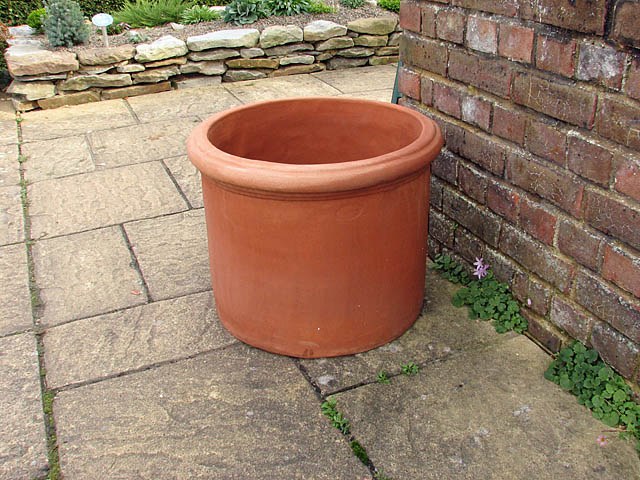
New container
Some kind visitor filled it for us with something we had not anticipated…
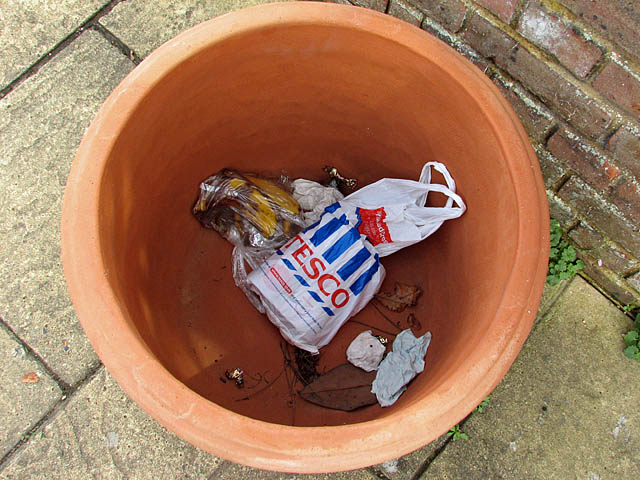
A short while later
It's amazing how careless people can sometimes be. Any guesses as to what damaged this leaf?...
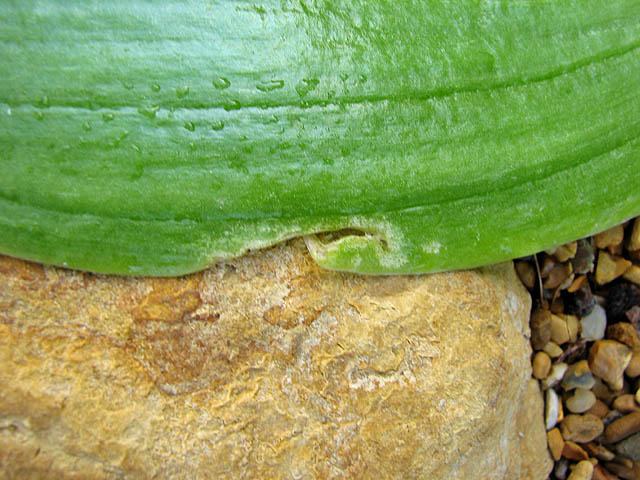
Whiteheadia bifolia leaf damage
It is where someone had pulled out of the gravel the label for the plant (presumably to read it more easily) then put back in..through the leaf! The very same thing happened again just a couple of days later. Whiteheadia bifolia has just two very large, flat leaves which look very striking. We also found that people simply could not resist prodding and poking them. Unfortunately with the cuts and abrasions from the prodding, disease soon got in and the leaves withered. The lesson we learned from this? - plant things like this out of reach!
Another surprisingly common behaviour is people (often, though not always, young ones) who nip the heads of flowers then leave them in a little heap next to the plant. I used to think this was perhaps due to a mouse or other animal but I have observed the real culprits on many occasions!
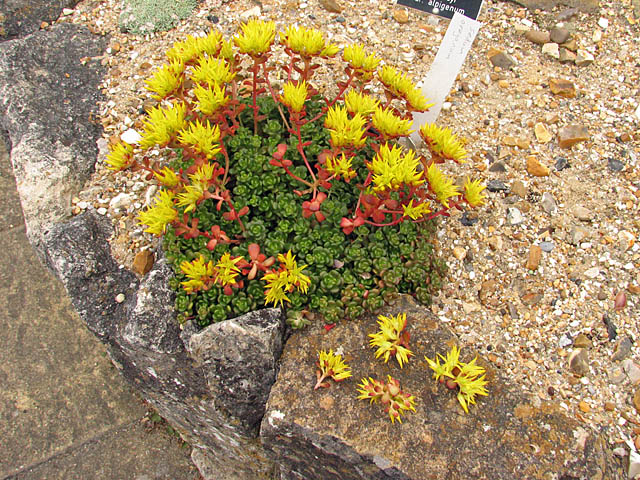
Sedum oregonum
In trying to demonstrate horticultural excellence we do make an effort to make our displays as perfect as we can, showering love and care on the plants, how we arrange them if on display and so on. In the display house, once new plants are plunged, the final task each day is to brush the sand around each so that it is flat and free of marks. It is a joy to see the house looking pristine at the start of each day and staff feel justifiably proud of its appearance. However, it is not long before this perfection has gone. Visitors often drag their hands in the sand producing glaring marks which we have to repair several times a day
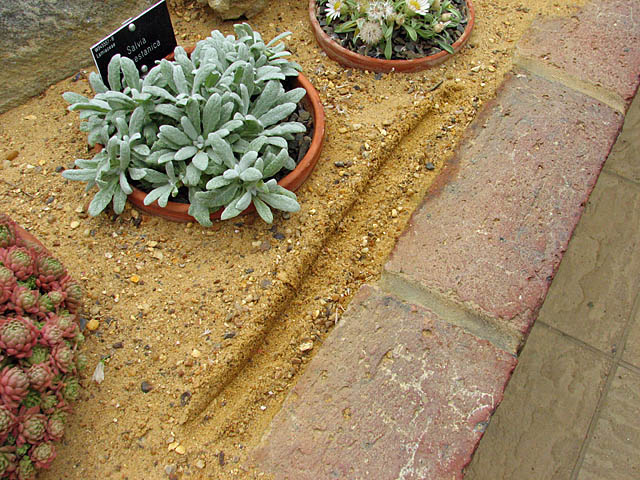
Marks in the sand
Plants on display also frequently get damaged with broken stems and flower heads. Cameras and bags lie at the root of this one. People often lean over the display to get a better picture of a plant near the back and do not notice that in so doing they are pressing against the plants right in front of them, often leading to breakage. Or they turn round to talk to a friend while the bag on their shoulder swings round and ploughs through everything in its path. People also frequently remove labels from the plants. Sometimes this is to get a better picture, but then they put the label back in the wrong place, or just don't bother to replace it at all. Sometimes they steal them because they want to remember the name of a plant but they don't have a pen with them to write it down, so they take the label. I can feel my temperature rising already….
Outside on the sand beds and other raised beds the gravel seems irresistible and is often dragged into little piles or otherwise disturbed so it looks untidy. I have to tidy these up at least twice a day.
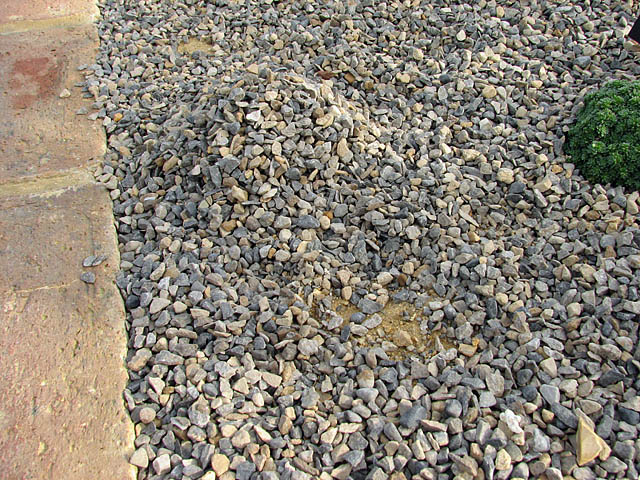
Gravel piled up
Cushion plants can easily suffer damage. What happened here I wonder…
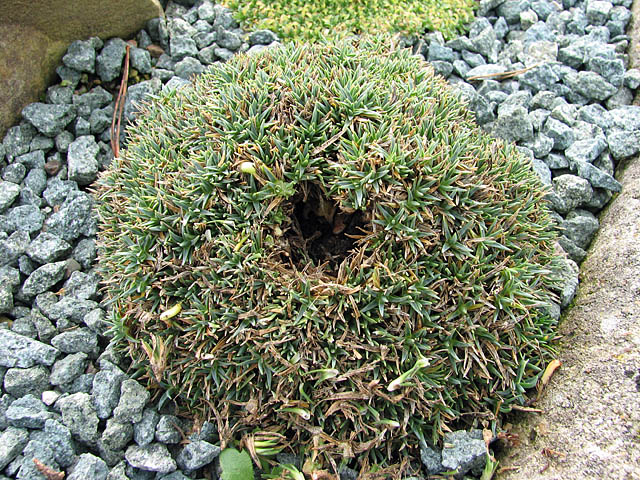
Hole in cushion plant
Maybe someone took a cutting, maybe an animal went hunting for hidden insects. Sometimes children poke their fingers into cushions and ruin what may have taken 10 years or more of growth to achieve. Once a Dionysia was ruined by someone prodding it in such a way as to draw a smiley face on it. We were not smiling ourselves….!
Sometimes plants are completely pulled to pieces. Again, it is not always easy to determine what happened - maybe a mouse, a bored child, a bird. Whatever the cause, this Androsace pyrenaica for example will no longer be enjoyed by anyone:
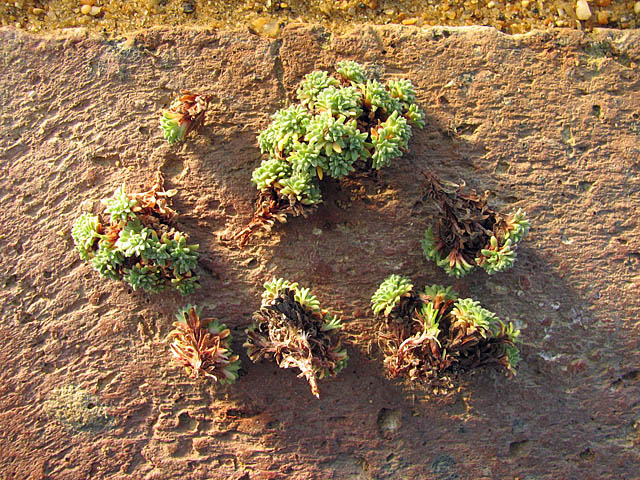
Androsace pyrenaica pulled apart
Now have a look at these two pictures:
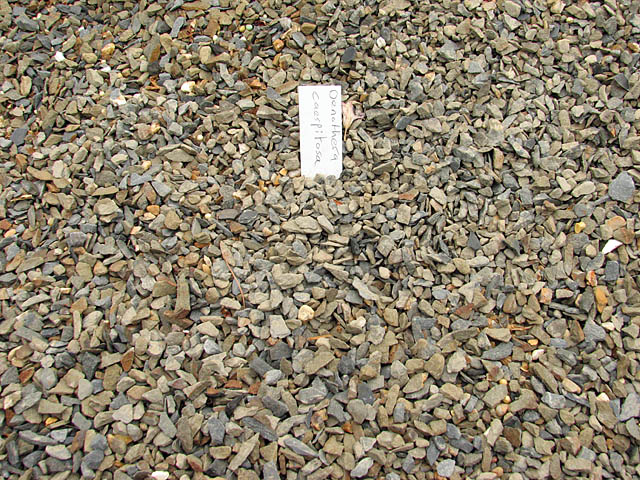
Oenothera caespitosa
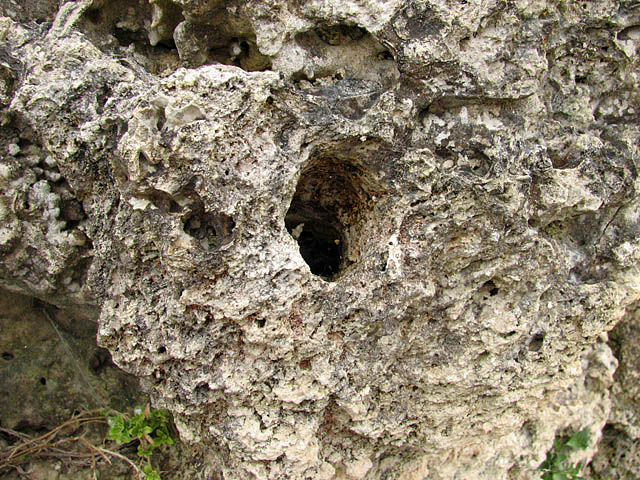
Hole in tufa
Ten out of ten for spotting what's wrong with these scenes - where is the Oenothera and what should be in that hole?? Sadly, theft is a burden we have to live with. The Oenothera is one of 4 plants which disappeared from our sandbed yesterday, along with several plants from the rock garden. In most cases, they had been dug out and the gravel carefully put back and smoothed over to try and make it look as if nothing had happened - maybe they thought we wouldn't notice. All were quite choice plants, so it was someone who knew a thing or two. One Aloe from our South African bed was left tossed aside when they broke the roots trying to extract it. A similar fate happened to this Dionysia which broke off as they tried to extract it from the tufa block in which it had happily grown for over 10 years:
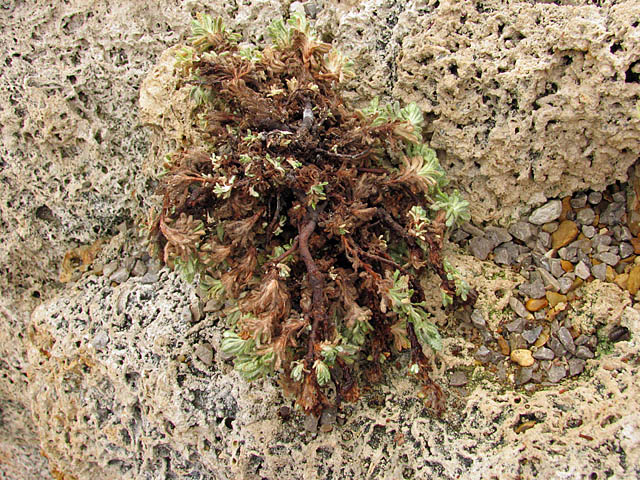
Broken Dionysia
Potted plants sometimes get stolen too from the display house. However, given the number of visitors we get, theft happens on a remarkably small number of occasions. Many gardens put their special displays behind glass barriers to avoid theft, but we want to avoid going down this route if we possibly can. Most plants and especially alpines are appreciated much better by being able to get close up and we want our visitors to be able to enjoy them in this way. It is sad that for some people, owning certain plants becomes an obsession for which they are willing to steal. Even sadder is that if they had only asked, we may have been able to give them one. We are always happy to try and accommodate enthusiasts by giving them spares if we have them, or offering to propagate our plants or provide seed from them. In turn, we have much benefitted from plants received in trade for our own. This is the way gardeners usually operate - more than happy to share their things with each other.
This is one of the great joys about being in the gardening world - the vast majority are honest, passionate and generous people who will happily share if they possibly can. You only have to ask.
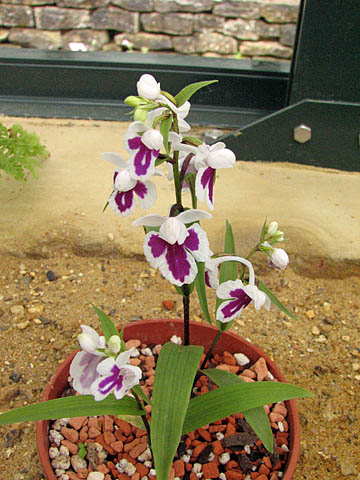
Ponerorchis hybrid - this is just one of countless plants we have received through the generosity of gardening friends.
I suppose the behaviour of children is sadly the biggest source of stress for the suffering gardener in public gardens. Perhaps I should avoid this issue before the stress levels peak!!....well maybe just a few comments as this is a big issue for many public gardens. Children often run round gardens, making no distinction between beds and paths, climbing on the rocks, screaming and shouting at the top of their voices and damaging endless plants, sometimes deliberately so. The place is seen as a park where children can be let off the leash rather than as a garden. Even sadder, their parents or guardians seem not to care and on some occasions even encourage their misbehaviour. They, nor anyone else, seem willing or able to set boundaries for children these days. Anything is fine. While we are of course making increasing efforts to engage and interest children in gardening, there will always be those who are not interested in taking advantage of these efforts, so the problem remains.
Has anyone out there found a solution to this?
Finally, love them as you might, it is sometimes members of your own team that let you down and trash your plants and try to fob you off with excuses.
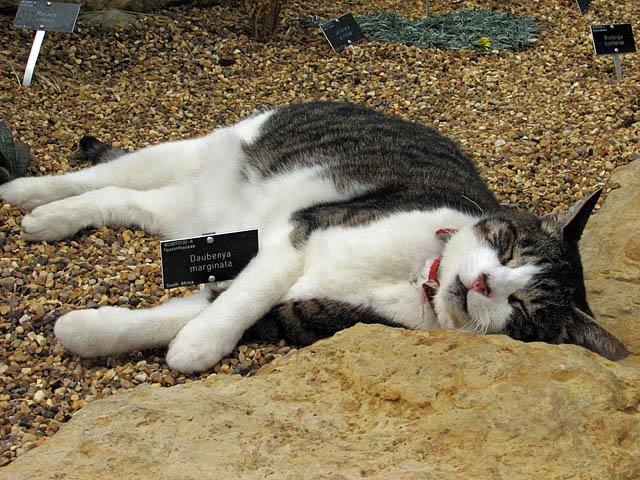
"I was just trying to keep this Daubenya warm..honest"
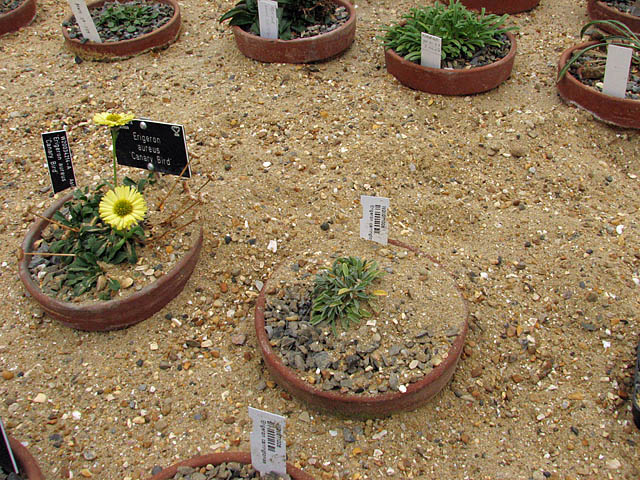
"You mean this area isn't a toilet?"
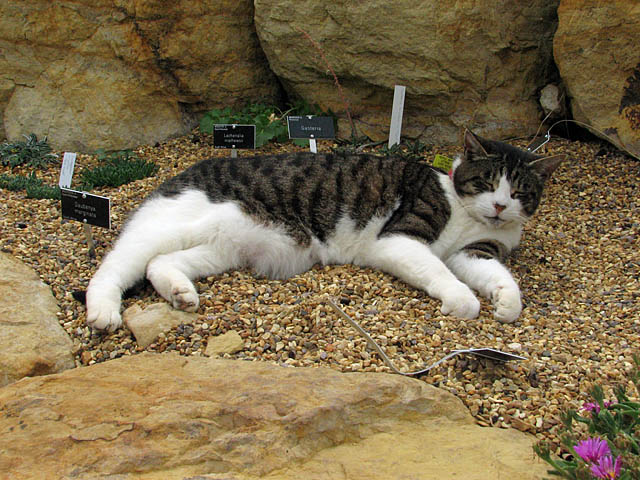
"Well you didn't expect me to sleep on that label did you?"
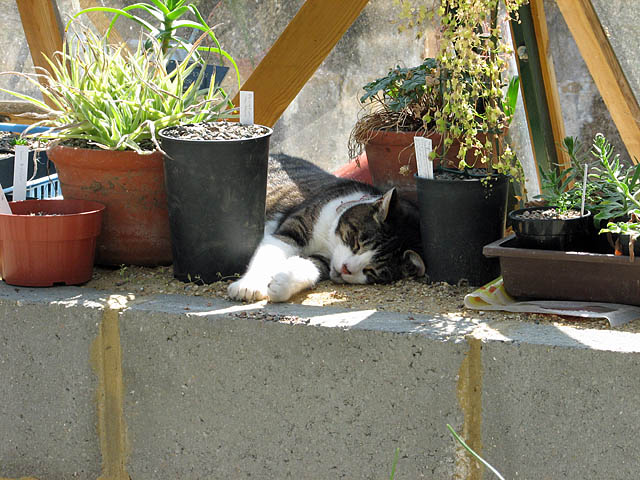
"I thought the pot that was in this spot would look better on the floor"
^ back to the top ^
|

